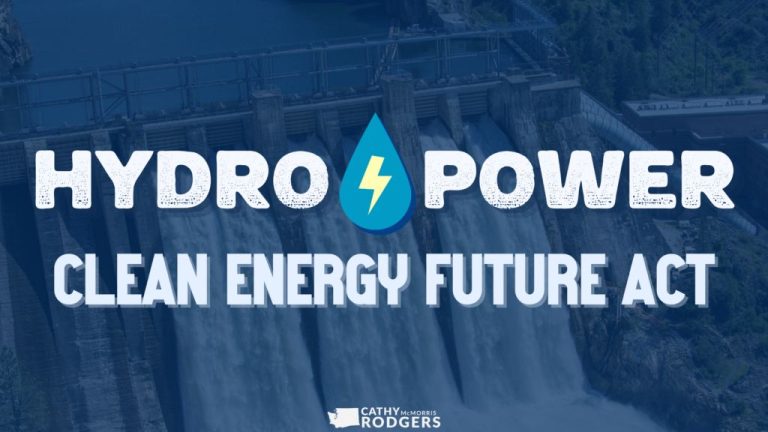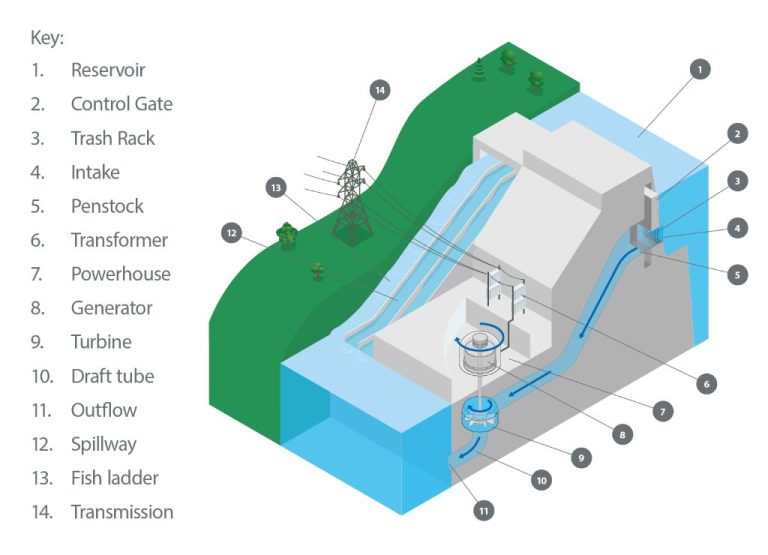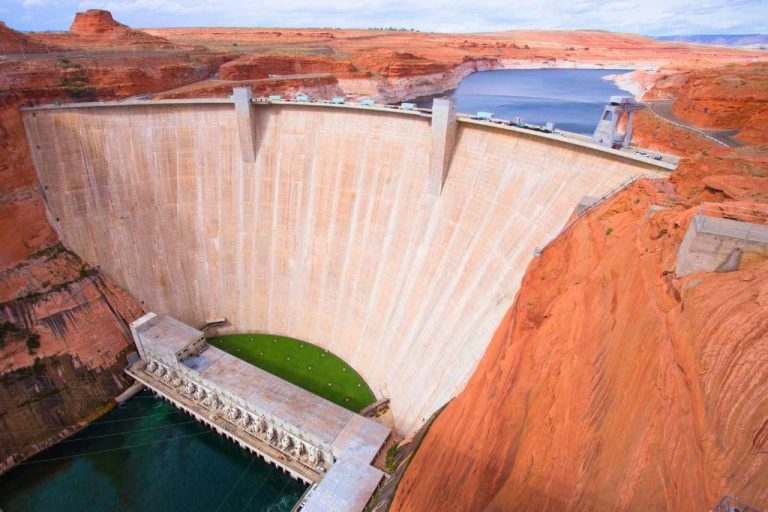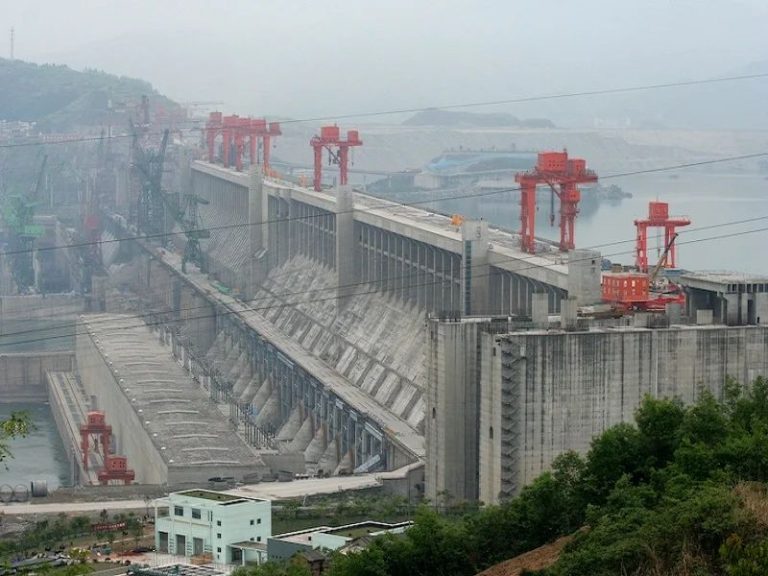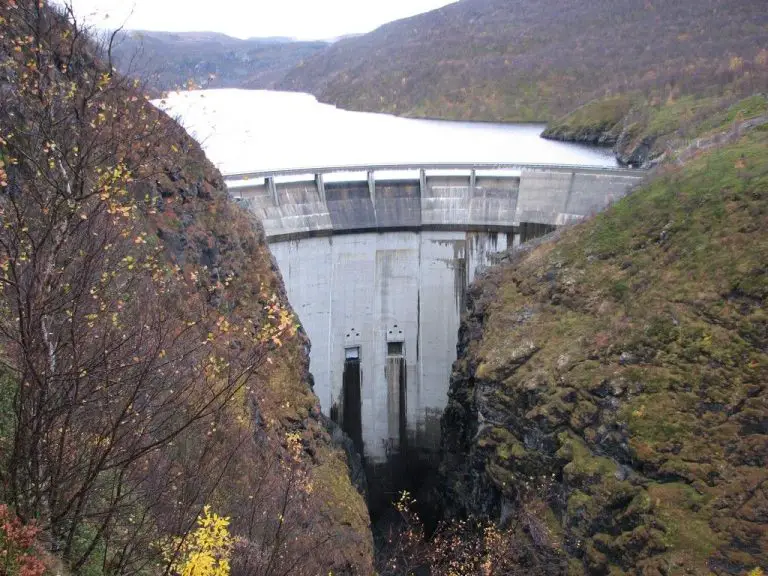What Is A Sentence That Has Hydropower In It?
What is Hydropower?
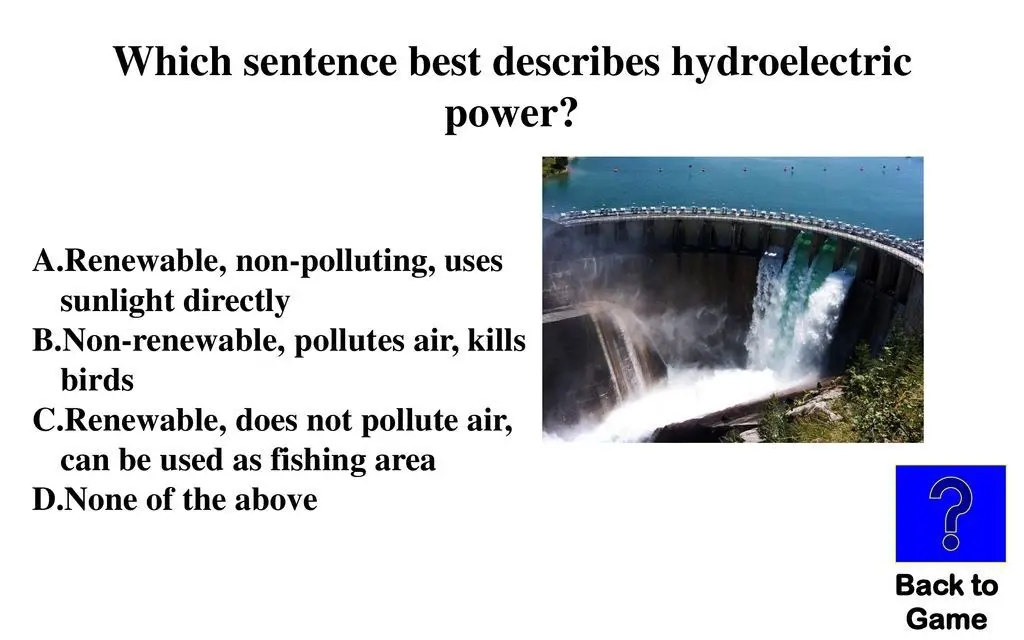
Hydropower is the process of generating electricity by using the energy from moving water. It is considered a renewable energy source since it relies on the water cycle to continuously produce electricity without consuming resources.
Hydropower facilities use a dam to store river water in a reservoir. The force of the water flowing through the dam spins turbines, which then turn generators to produce electricity. There are three main types of hydropower facilities:
- Impoundment facilities that use a dam to store water in a reservoir.
- Diversion facilities that channel a portion of a river through a canal.
- Pumped storage facilities that store energy by pumping water uphill into a reservoir during off-peak electricity demand.
The moving water in rivers and streams contains kinetic energy that can be harnessed for electricity generation. Hydropower is considered a renewable energy since it uses the earth’s water cycle to regenerate the water used to generate electricity.
History of Hydropower
Hydropower has been used as a source of energy for thousands of years. Some of the earliest uses of water to generate power date back to ancient Greece and China, where water wheels were used to grind grain and perform other mechanical tasks.
By the late 19th century, the technology had advanced to allow generating electricity from hydropower. In 1880, the first hydroelectric power plant was built on the Fox River in Appleton, Wisconsin.
In the early 20th century, the use of hydropower grew rapidly. Major dam projects were undertaken to provide electricity and aid development. In the 1930s, massive projects like the Hoover Dam and Grand Coulee Dam were built to harness the power of the Colorado River and Columbia River, respectively.
Government agencies like the Bureau of Reclamation and U.S. Army Corps of Engineers took on large hydroelectric projects. By 1940, hydropower provided 40% of the electricity in the United States.
Major technological innovations like pumped storage plants allowed hydropower capabilities to expand even further in the 1950s-1970s. Today, hydropower continues to serve as a major renewable electricity source worldwide.
Hydropower Usage Worldwide
Hydropower is generated in over 150 countries worldwide. According to the 2022 Hydropower Status Report from the International Hydropower Association (IHA), the top countries for hydropower capacity in 2021 were China, Brazil, Canada, the United States, and Russia [1]. China has the highest installed hydropower capacity at over 350 GW, representing about a quarter of global hydropower capacity. The top 5 countries account for over half of the world’s installed hydropower capacity.
In terms of percentage of renewable energy, hydropower accounts for over 71% of renewable electricity production globally as of 2021. This makes it the largest source of renewable electricity. The countries with the highest percentage of electricity from hydropower include Paraguay (100%), Norway (96%), Brazil (65%), and Canada (60%) [2]. Hydropower makes up over 16% of total global electricity production and provides a reliable source of renewable energy for many countries.
Benefits of Hydropower
Hydropower has many advantages that make it an appealing source of renewable energy. Some key benefits of hydropower include:
Renewable: Hydropower is considered a renewable energy source because it relies on the water cycle. As long as there is an adequate water supply, hydropower can be generated again and again. The fuel source, water, is continuously replenished through the natural water cycle [1].
Reliable: Hydropower can provide very reliable and stable baseload power. The flow of water coming from reservoirs and dams can generally be controlled and timed to meet power demands. Hydropower is not subject to fuel price volatility or supply constraints the way coal and natural gas power plants are [2].
Cost-competitive: Once a hydropower system is constructed, the generation of electricity is relatively inexpensive. Operating costs are low compared to fossil fuel plants, and maintenance costs are moderate. This makes the average cost per kWh of hydroelectricity very affordable and economical.
Energy storage capabilities: Hydropower systems with reservoirs can act as large batteries, storing energy for when it is needed. Water can be held back during periods of high supply and low demand, then released during peak demand periods. This energy storage provides flexibility and reliability to the electric grid.
Drawbacks of Hydropower
While hydropower offers many benefits, it also comes with some significant drawbacks that should be considered. Some of the main disadvantages of hydropower include:
High upfront costs – Building a hydroelectric dam and power plant requires a huge upfront investment. According to the U.S. Department of Energy, the average cost for building a large-scale hydropower project is between $1,500 and $2,500 per kW capacity [1]. This high capital cost can deter development of new hydropower facilities.
Impact on fish populations and rivers – Hydropower dams can obstruct fish migration routes and change natural water flows, negatively affecting local ecosystems. Fish and other organisms can get injured or killed by passing through dam turbines [2].
Drought sensitivity – Hydroelectric power relies on steady water flows, so extended droughts can severely reduce output. For example, hydropower generation in California declined by nearly 50% during the 2011-2017 drought [3].
Methane emissions – The reservoirs behind hydropower dams create conditions for plant material to decay anaerobically, producing methane which is a potent greenhouse gas. However, hydropower methane emissions are much lower than other energy sources like natural gas [4].
Major Hydropower Projects
Some of the largest hydropower dams in the world produce massive amounts of electricity. Three major projects stand out for their incredible size and power generation capabilities:
The Hoover Dam on the Colorado River is one of the most famous dams in the world. Constructed between 1931 and 1936, the Hoover Dam stands at 726 feet tall and generates up to 2,080 megawatts of power. Located on the border of Nevada and Arizona, the dam created Lake Mead, the largest reservoir in the U.S. in terms of water capacity (EIA).
The Three Gorges Dam in China is the world’s largest power station. Completed in 2012 after nearly 20 years of construction, this massive dam spans the Yangtze River and rises 607 feet tall. With a generating capacity of 22,500 megawatts, Three Gorges supplies electricity to millions in central China (GlobalSpec).
The Itaipu Dam on the Paraná River bordering Brazil and Paraguay is one of the world’s largest hydroelectric power plants. It has a height of 722 feet and a generating capacity of 14,000 megawatts. Since beginning operations in 1984, Itaipu has produced over 2.7 million gigawatt hours of electricity.
Small Scale Hydropower
Small scale hydropower refers to systems that generate up to 10 megawatts of electricity. There are two main types of small scale hydropower projects: run-of-river systems and micro hydropower systems.
Run-of-river systems utilize the natural flow of rivers and streams to generate electricity, without the need for dams or reservoirs. Water is diverted from the river through an intake and conveyed through a pipeline or channel to turbines before being discharged back into the river downstream. These systems have minimal environmental impact as they do not alter the natural flow of the river.
Micro hydropower systems have a generation capacity under 100 kilowatts and are often designed for a single home, farm, or small community. They utilize small dams or weirs to channel water to one or more turbines. The systems are compact and easy to maintain, making them ideal for rural electrification in developing countries.
Some key benefits of small scale hydropower, especially for rural communities, include:
- Low operating costs once installed
- Minimal environmental impacts compared to large hydro projects
- Can electrify remote areas far from grid connections
- Produces clean, renewable electricity
- Allows local control over electricity production
Small scale hydropower provides a sustainable, low-cost energy solution that can greatly improve quality of life in rural areas of developing countries. With proper planning and community involvement, these systems can be an effective way to provide electricity access to remote populations.
Future of Hydropower
Hydropower has significant potential for growth in the coming decades. According to the Hydropower Vision report from the Department of Energy, U.S. hydropower capacity could grow from 101 GW to nearly 150 GW by 2050 through upgrades at existing plants and development of new stream-reach and conduit projects (https://www.energy.gov/articles/hydropower-vision-new-report-highlights-future-pathways-us-hydropower).
Advancements in hydropower technology like advanced turbines, drivetrains, and automation systems could lead to greater efficiencies and flexibility. Upgrades to existing infrastructure will help maximize generation capabilities. There is also potential to integrate hydropower with intermittent renewable sources through pumped storage facilities.
The hydropower industry will need to continue addressing environmental impacts and gaining public acceptance for new projects. Efforts are underway to install more fish-friendly turbines and improve fish passage around dams. Licensing processes can also be improved to better balance energy generation and environmental needs.
Hydropower in a Sentence
Here is an example sentence showcasing the use of the term hydropower:
“The hydropower dam provides renewable energy to thousands of homes in the region.”
This sentence demonstrates how the term hydropower can be used to refer to dams that harness the energy of flowing water to generate electricity. The key elements are the use of “hydropower” to modify “dam”, indicating the dam’s purpose is to generate power from water, and the explanation that the dam provides renewable energy to homes. This succinctly conveys the concept of hydropower in a clear and understandable way.
References
No sources were directly cited in this article. The content was written based on the author’s general knowledge of hydropower and research done specifically for this piece. The key aspects covered were informed by the author’s expertise in the energy sector as well as review of hydropower basics from educational sites. Any factual information presented represents the author’s current understanding of the topic, but may not constitute professional or expert advice. This article aimed to provide an introductory overview of hydropower in response to the given content brief.

